My seven-year-old daughter summed up the feelings of the nation and the world during dinner earlier this week: “Corona, Corona, Corona. I HATE CORONA!” (While mom and dad generally don’t allow the “h” word in our house, the shelter at home orders have brought with it a relaxing of such rules.). Perhaps only a pandemic of this magnitude can unify us the way it has in overcoming this common enemy and restarting our economy. It’s safe to say that no rational person is against people getting back to work at full speed and seeing our economy restart. Unfortunately, the reality is that the federal stimulus packages and moratoriums on foreclosures and evictions will not be enough to stave off defaults that ultimately will lead to bankruptcy for many.
As we begin to think of a post-pandemic world, lenders, landlords, and other creditors should begin to prepare for the inevitable increase in defaults and bankruptcy filings. While many experts predict this surge is still months away, this is no reason for creditors to not begin today to do what can be done to best position themselves for when that day comes. (Balch’s Creditors Rights & Bankruptcy Practice already is cross-training our colleagues from other practice areas to ensure we have the proper resources to assist all clients in protecting and enforcing their creditors rights.). Below is a list of things creditors should be doing now in preparation of the storm ahead. Admittedly, there is no new glass being shattered here, but taking basic steps now will help you be better prepared for what lies ahead.
1. Identify a “watch list” of high-risk obligors.
Regulated institutions already are required to do this at an institutional level. Creditors not required by regulation to do so, should develop their own list and individual officers within regulated institutions should begin to formulate such a list within their own portfolio (if not doing so already). This step will help you decide where first to direct your attention.
2. Review your documents.
Many times it has taken a bankruptcy filing to cause a lender to review its documents only to learn for the first time that the signatures the lender “thought” it had on the loan documents were never obtained. Documents should be reviewed now to ensure all of the documents you think you have actually are in the file, are properly signed, and (where applicable) are properly notarized.
3. Confirm you have what you think you have.
Before decisions are made on how to address a credit, it is vital to confirm that the terms you think you have actually exist in the underlying documents. For example, don’t assume that just because you have a guaranty in the file that the guaranty applies to all of the underlying obligations. And particularly for relationships with multiple obligations, double check that the default of one obligation is a default of all of them.
4. Check your collateral—Then Check It Again.
This is a big one. You don’t need us to tell you that a properly-documented collateral package can make all the difference when a borrower defaults. At a bare minimum, collateral documents should be reviewed to ensure proper execution and filing. If the belief is that a particular item of collateral secures more than one particular debt, double check to make sure the documents properly set this out. If your collateral is personal property, it is best to ensure the UCC-1 financing statement was filed in the proper jurisdiction and has not lapsed. To the extent possible, updated title and UCC searches should be obtained as well.
5. Know what is and what isn’t a default.
In most instances, this will not be a material issue as the default will be due to nonpayment which will clearly constitute a default. That will not always be the case though. For example, while the loan documents may require financial reporting, do financial covenants apply? Does an event of default under one document constitute a default of other documents? What about a change in control?
6. Identify setoff rights.
If you are a landlord, chances are you’re holding a security deposit. If you are a bank, your borrower may have funds on deposit with you. Confirming now that your documents and applicable law give you the right to setoff should you need to do so, will remove an important hurtle should that day come. A common trip-up is the situation in which the funds on deposit are in an account owned not by your borrower, but by an affiliate of your borrower who has not expressly given you the right to setoff. Another thing to consider sooner than later is whether you can place a hold on such an account and if so, under what conditions.
7. Explore potential counterclaims.
No creditor wants to think that its obligor has claims against it. However, it is much better to consider this possibility sooner than later. To the extent a potential risk exists, getting a handle on the facts and developing a legal strategy now will put you in a much better position once the claims are made.
8. Consider DIP lending and cash collateral use.
This one applies to lenders and noteholders in particular. If a chapter 11 filing is a real risk for a borrower, how will they fund it? Saying “that’s not my problem” is not the answer. The borrower (now debtor) could seek to use your cash collateral or it could bring in a new lender (“DIP lender”) to provide funding that is given senior liens on your collateral (yes, a bankruptcy court can do that). There are many aspects of these issues that should be considered with the help of an attorney, but the earlier these issues are put on your radar, the better off you will be should bankruptcy come in the picture.
9. Form a plan to address deficiencies.
Of course not every file can be reviewed and not every problem in the ones that are reviewed can be addressed. However, to the extent issues are identified early on, you can develop a plan to address them. For example, if a problem has been identified with your collateral, perhaps a forbearance arrangement or extension can be considered in which any gaps are filled.



